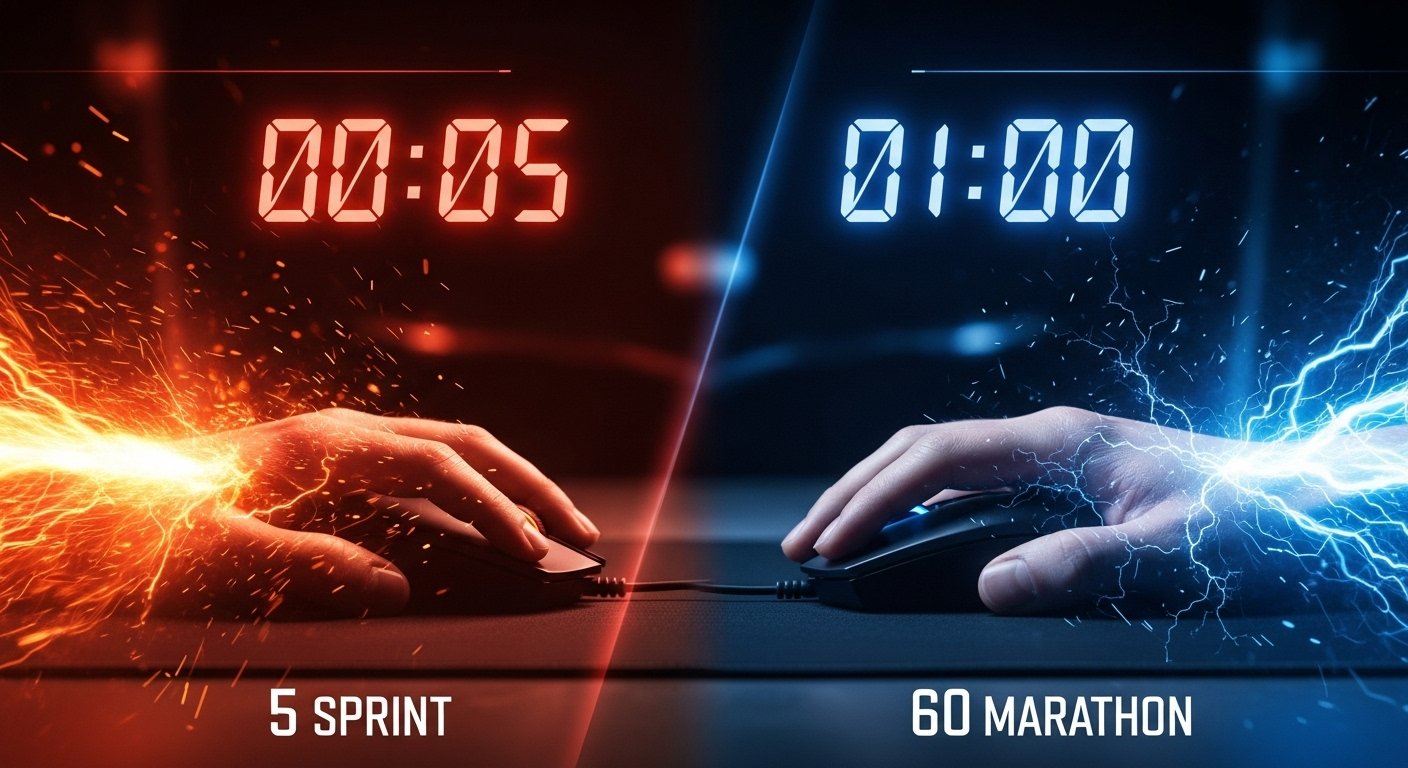You just did it. You loaded up an online click speed test, took a deep breath, and unleashed a torrent of clicks for five frantic seconds. The result flashes on the screen: 14 Clicks Per Second (CPS). You feel a rush of pride—that’s pro-level speed. But later that day, you jump into a long, intense Minecraft Bedwars match. Halfway through a critical fight, your fingers feel slow and clumsy. Your clicking speed fades, and your opponent overwhelms you. The disconnect is jarring. If you have elite speed, why does it vanish when it matters most? This experience exposes the central question in the debate of the 5-second vs. 60-second click test: which one is the true measure of a player’s ability?
Executive Summary: A Guide to Understanding Your Real Clicking Power
This guide will finally settle the debate. We’re going beyond simple CPS scores to dissect what the 5-second and 60-second tests truly measure about you as a player. You’ll discover the critical concept of “click fatigue” and see how your performance inevitably drops over time—a key metric that separates amateurs from pros. We will break down how the short-duration test measures your burst speed and reaction time, while the long-duration test reveals your stamina and consistency. By the end, you’ll understand that one isn’t better than the other; they test different, equally vital skills. More importantly, you’ll learn how to use both tests as a complete skill assessment tool to identify your weaknesses and build the clicking power that shows up when the game is on the line.
Defining the Contenders: A Tale of Two Timers
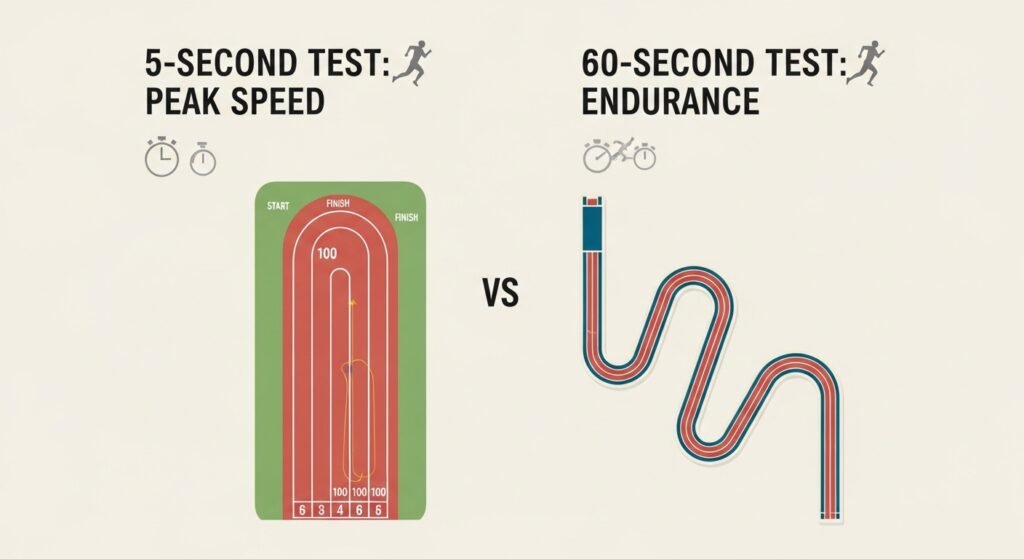
At their core, every online click test measures your Clicks Per Second (CPS). But changing the time limit from five seconds to sixty seconds fundamentally changes what is being measured. It’s the difference between a 100-meter dash and a 5-kilometer run. One tests your explosive power, the other tests your endurance.
The 5-Second Test: The All-Out Sprint for Peak Performance
The 5-second click speed test is a measure of your absolute maximum speed. It’s a pure test of burst speed. For these five seconds, you don’t have to worry about aiming, consistency, or getting tired. Your only goal is to achieve your peak performance by clicking as frantically as possible using techniques like Jitter Clicking or Butterfly Clicking.
Think of it as sprint clicking. This short-duration test reveals your raw potential and fast-twitch muscle fiber capability. It’s an impressive number to show off, and it has its roots in tests like the famous Kohi Click Test from Minecraft’s competitive past, which was all about quick, decisive action. This test answers one question and one question only: “How fast can you possibly click?”
The 60-Second Test: The Marathon of Stamina and Consistency
The 60-second click test is a completely different beast. This long-duration test isn’t about your peak speed; it’s about your average CPS over a sustained period. This is the true test of endurance clicking.
Here, new factors come into play that the 5-second test completely ignores: stamina, pacing, and most importantly, consistency. Can you maintain a high clicking rate after 20 seconds? After 45? Or does your speed crumble as click fatigue sets in? This test measures your practical, usable speed—the kind of clicking ability you need to survive a long fight. It’s not about how fast you start, but about how well you can hold that pace without breaking down.
The Unseen Enemy: Why “Performance Drop-off” is the Real Metric
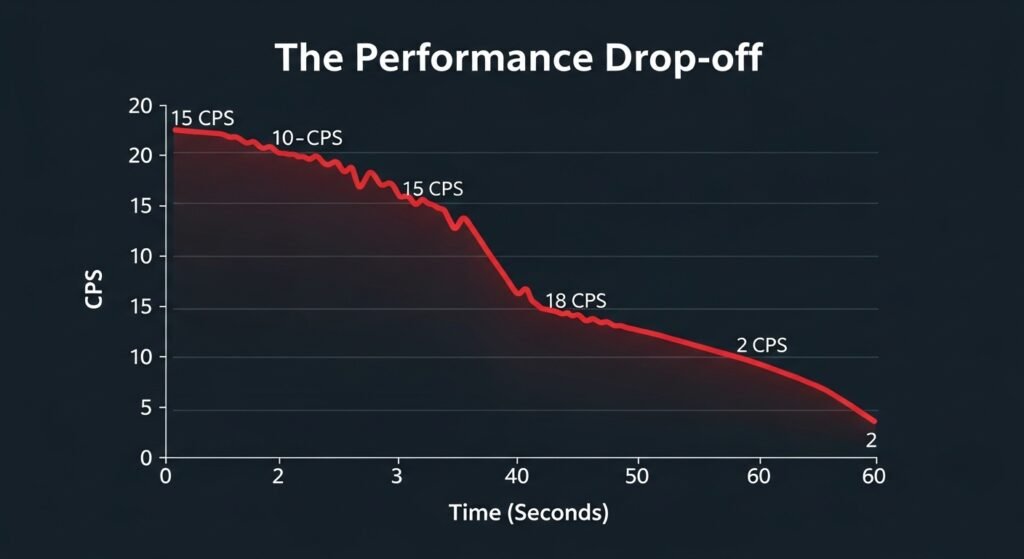
The single biggest difference between a 5-second and a 60-second test is an invisible force that every gamer has experienced: click fatigue. Understanding how your performance degrades over time is more revealing than any single CPS score. This performance drop-off is the real metric that separates an amateur with fast fingers from a pro with true stamina.
What is Click Fatigue? (And How It Separates the Pros from Amateurs)
Click fatigue is the decline in your clicking speed and control caused by physical exhaustion in your hand and forearm muscles. In a 5-second test, you never experience it. You can tense every muscle and go all-out without consequence.
But in a 60-second test, fatigue is the main event. After 15-20 seconds of high-speed clicking, your muscles start to burn, your finger dexterity decreases, and your CPS begins to plummet. A pro player isn’t necessarily someone with the highest 5-second score; they are often the person whose score drops the least over 60 seconds. They have trained their muscle memory and technique to be efficient, minimizing hand strain and maximizing endurance.
Your CPS is a Lie: Charting the Inevitable Decline Over 60 Seconds
If you take a 60-second test, pay attention to the graph, not just the final number. It will tell you a story. For most players, it looks like this:
- 0-10 Seconds: Peak performance. You might hit 12-15 CPS as you sprint out of the gate.
- 10-30 Seconds: The decline begins. Fatigue sets in, and your speed might drop to 8-10 CPS as your muscles start to ache.
- 30-60 Seconds: The struggle is real. By the end, you’re fighting just to maintain 6-7 CPS, a shadow of your initial burst.
This is why your initial raw speed is a “lie” in the context of a longer test. It’s not sustainable. Your true, practical CPS is the average you can hold once fatigue becomes a factor.
How Pacing Can Dramatically Influence Your Average CPS
This leads to a crucial strategy for the 60-second test: pacing. If you start the test by clicking at 100% of your maximum effort, you will burn out in 15 seconds, and your average score will suffer terribly.
A smarter approach is to find a sustainable pace—perhaps 70-80% of your maximum speed—that you can comfortably maintain for a longer period. By avoiding early burnout, your average CPS over the full minute will often be much higher. This is one of the best ways to increase your effective CPS in a way that translates to actual in-game performance, as it trains you to manage your energy just like you would in a real match.
What Each Test Reveals About Your Player Ability
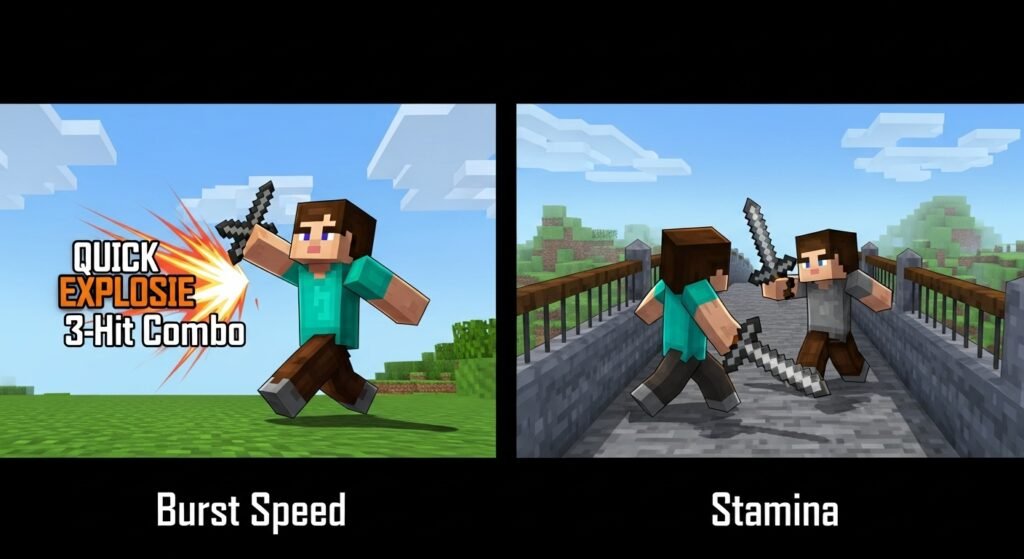
A number on a screen is meaningless without context. The true value of these tests is in what they reveal about your specific strengths and weaknesses as a player. The 5-second and 60-second tests are diagnostic tools that measure two fundamentally different aspects of your gaming skill.
The 5-Second Test Measures: Burst Speed and Reaction Time
A high score on the 5-second test is a clear indicator of elite burst speed. It shows that you have excellent fast-twitch muscle response and can achieve an explosive level of peak performance on command. This is your raw speed, unhindered by fatigue.
This skill isn’t just for bragging rights; it directly translates to critical in-game moments that are decided in an instant.
- Real-Game Application: Think about the first two seconds of a surprise encounter in Minecraft PvP. The player who can land a 3-4 hit combo before the other can react often wins the fight right there. That initial, overwhelming flurry of clicks is a direct reflection of your 5-second test ability. It’s about starting the fight with maximum impact. Your ability to execute this is a core part of what CPS truly is in a practical sense.
The 60-Second Test Measures: Endurance, Consistency, and Muscle Memory
A high score on the 60-second test tells a much different story. It proves you have clicking stamina. It shows that your clicking technique is efficient, your muscle memory is well-developed, and you can maintain a high level of performance long after your initial burst has faded.
This is the skill that wins long, drawn-out battles and determines your effectiveness over an entire match, not just the first few seconds.
- Real-Game Application: Imagine you’re in a lengthy Bedwars battle. You have to rush, build defenses, and then engage in a prolonged fight on a bridge. This entire sequence can last well over a minute. A player with poor endurance will be fast at the start but will see their building and combat effectiveness crumble as the fight drags on. A high 60-second score proves you have the sustained performance needed to stay effective from the beginning of a match to the very end. The choice between jitter and butterfly clicking can also dramatically impact this score, as some techniques are far more draining than others.
Comparison Table: What Your Score in Each Test Actually Means
| Metric | 5-Second Test Interpretation | 60-Second Test Interpretation |
| High Score | You have elite burst speed and fast-twitch muscle control. | You have excellent stamina, pacing, and an efficient clicking technique. |
| Low Score | You lack explosive clicking power. | You suffer from click fatigue and have poor endurance. |
| It Measures… | Your Peak Performance. | Your Sustained Performance. |
| Reveals Skill In… | Quick combos, ambushes, and initial engagements. | Long fights, consistent building, and overall match performance. |
The Verdict: Which is the “True” Test of Skill?
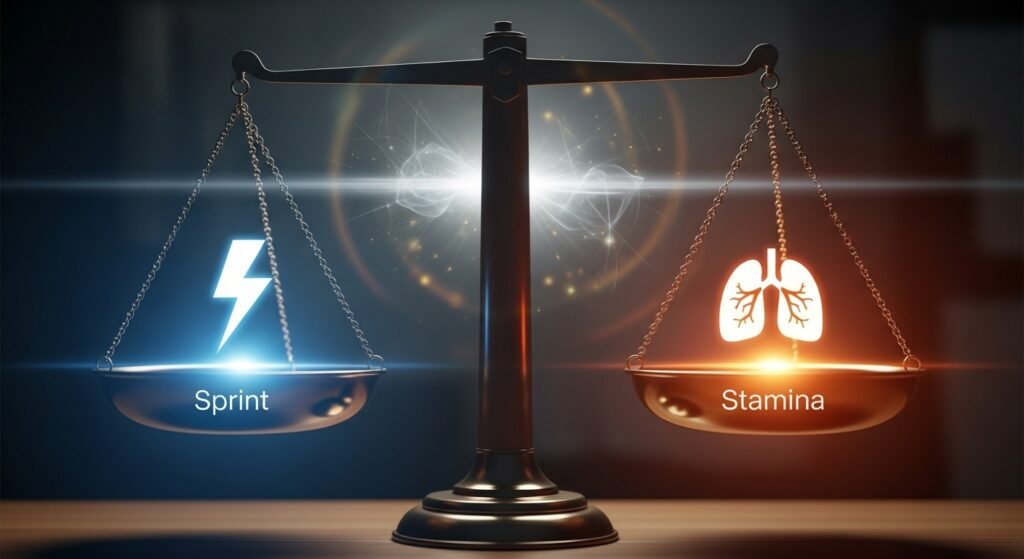
After breaking down what each test measures and the critical role of click fatigue, we can finally answer the central question. But the answer isn’t as simple as choosing one over the other. The idea of a single “true skill” test is a myth; the reality is far more interesting.
Case Study: My High 5-Second CPS Meant Nothing Until I Fixed My 60-Second Stamina.
For a long time, I was obsessed with my 5-second CPS score. I practiced Butterfly Clicking until I could consistently hit 15 CPS and thought I was a top-tier player. My ego was huge. But in-game, my results were inconsistent. I’d win quick skirmishes but would often lose longer, more strategic fights, and I couldn’t figure out why.
One day, out of curiosity, I tried a 60-second test. The result was horrifying. My average CPS was a pathetic 7. I saw my performance drop-off in real-time on the graph—a massive sprint followed by an embarrassing crawl. It was a wake-up call. My player ability was all sprint and no marathon. I had no stamina. I shifted my training, focusing on maintaining a consistent 10 CPS for the full minute. It was grueling, but after a few weeks, my in-game performance transformed. I was winning those long fights because my hands weren’t giving out on me. My 5-second score hadn’t changed, but my actual gaming skill had skyrocketed.
The Real Answer: They Test Two Completely Different, But Equally Important, Skills.
The 5-second vs. 60-second click test is not a competition. One is not better than the other because they are not measuring the same thing.
- The 5-second test is your benchmark for raw speed.
- The 60-second test is your benchmark for clicking endurance.
True skill isn’t about having one or the other; it’s about having a balance of both. You need the burst speed to win an opening engagement and the stamina to still be effective in the final moments of a match. A great player has a high 5-second score and a minimal performance drop-off in the 60-second test.
A New Way to Train: Using Both Tests to Become a Complete Player
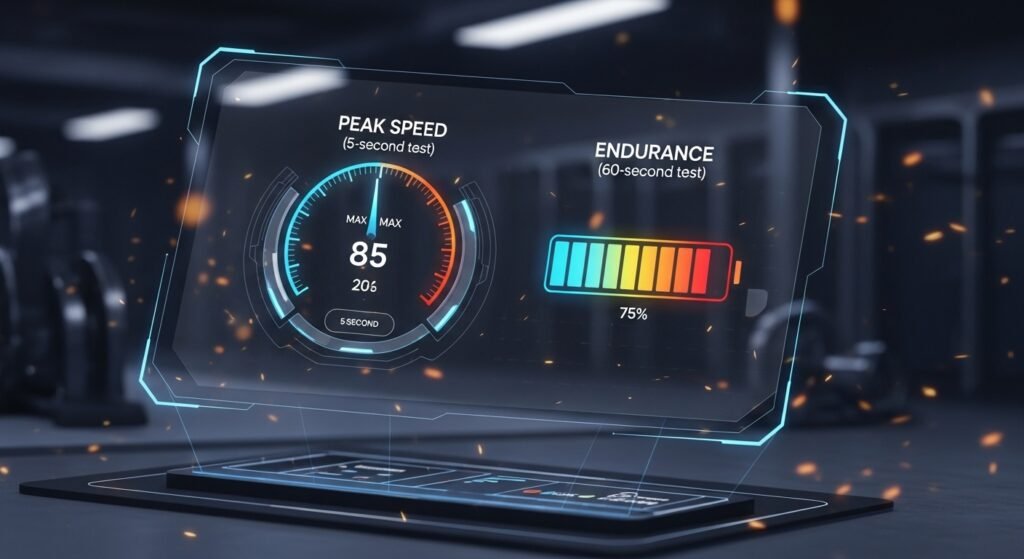
Instead of viewing them as a competition, use them as a complete skill assessment toolkit to guide your practice.
- Use the 5-Second Test to Measure Your Peak: Once a week, take the 5-second test to measure your maximum potential speed. This is your raw power.
- Use the 60-Second Test to Find Your Weakness: Take the 60-second test and pay close attention to the graph. Where does your CPS start to collapse? Is it at 15 seconds? 30 seconds? This is your fatigue point.
- Train for Endurance: Your goal is to push that fatigue point back. Practice by clicking at a sustainable pace for progressively longer intervals—start with 20 seconds, then 30, then 45, until you can maintain a consistent clicking rate for the full minute.
By training this way, you build both the explosive power and the relentless consistency of a truly skilled player.
Frequently Asked Questions (FAQ)
Is a high 5-second CPS score just about raw speed?
Why does my CPS drop so much in the 60-second test?
Are clicker games a good way to train for the 60-second test?
Which clicking technique is best for endurance?
For Minecraft PvP, which score is more important?
Conclusion
In the final showdown between the 5-second vs. 60-second click test, we discover there is no single champion. The search for one “true test of skill” is a flawed mission because they are designed to measure two fundamentally different, yet equally vital, components of a player’s ability. The 5-second test is the ultimate benchmark of your explosive, raw speed—your potential for peak performance in a split second. The 60-second test is the uncompromising audit of your stamina and consistency—your ability to perform under pressure when the fight drags on.
True gaming skill isn’t found in the sprint or the marathon alone; it’s found in the player who can master both. Stop asking which test is better and start using them as the powerful diagnostic tools they are. Use the 5-second test to push your limits, and the 60-second test to build the endurance that makes that speed useful. The ultimate goal is to become a complete player, one with the burst power to start the fight and the relentless stamina to finish it.
So, take both tests and analyze your results. What did they reveal about you? Are you a sprinter with no stamina, or a marathoner with no starting kick? Share your discovery in the comments below!

Hello, I’m John Harbour, a software developer passionate about creating innovative and accessible AI tools. As the creator of cps-checker.com, I enjoy building useful software and writing blogs to help people get the most out of my creations.

